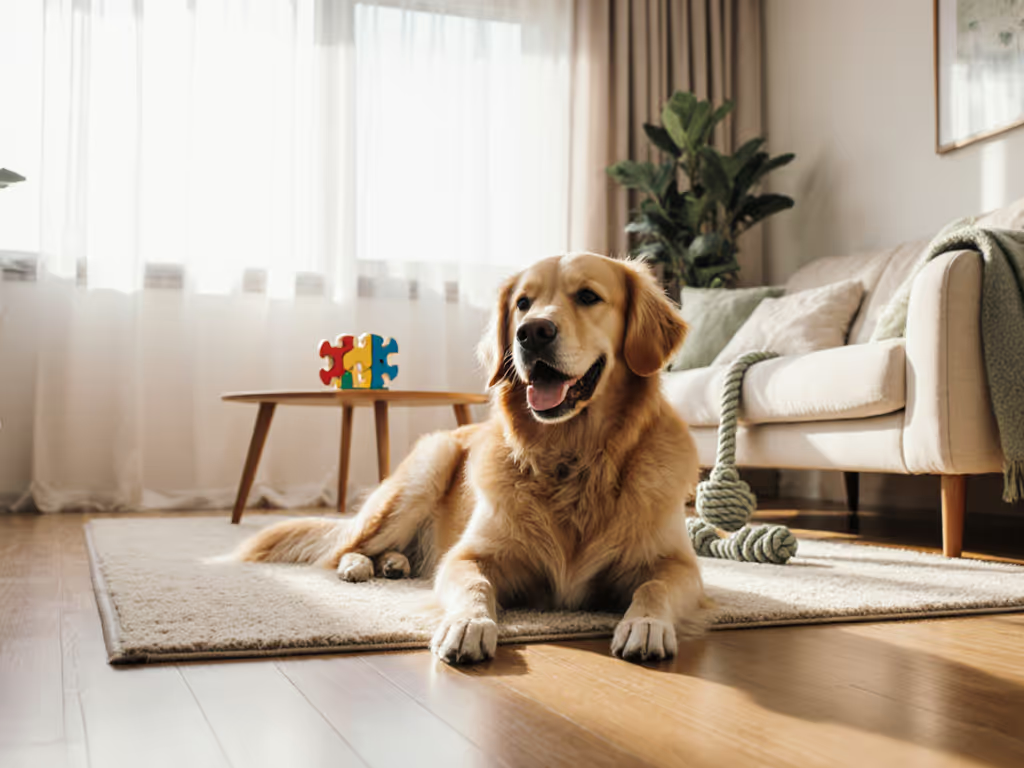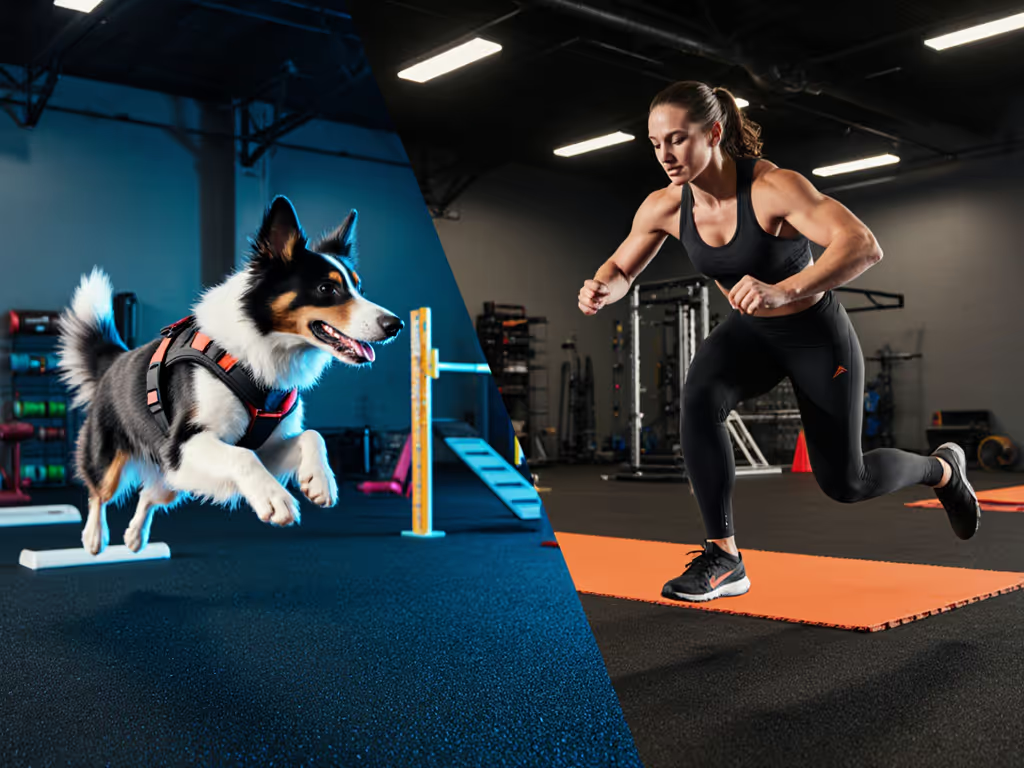
Winter Dog Exercise Safety: Joint-Smart Indoor Routines
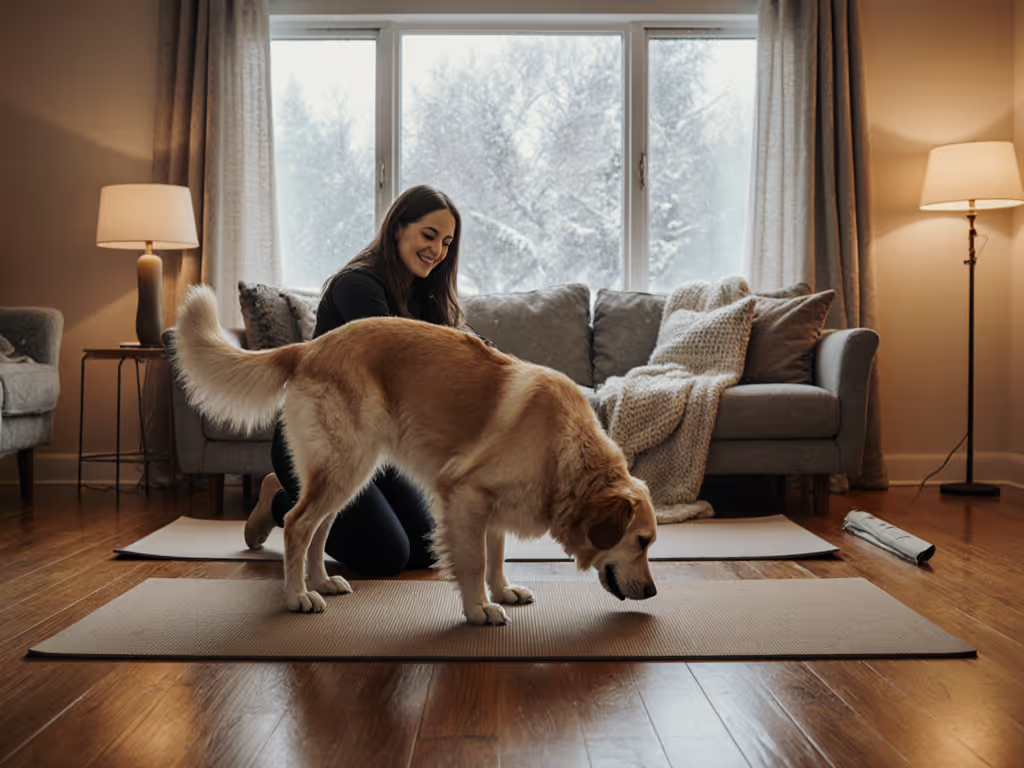
As temperatures plummet, maintaining safe winter dog exercise routines becomes critical for joint preservation, particularly when cold weather dog fitness demands shift indoors. Cold air stiffens synovial fluid, reducing joint lubrication by up to 20% (per 2023 biomechanics research), while slippery surfaces and constrained movement spaces amplify injury risks. Yet skipping activity isn't the answer: under-exercised dogs manifest pent-up energy through destructive behaviors, and joints weaken without controlled motion. Based on years measuring gait adaptations across Belgrade's icy seasons, I've refined protocols that protect delicate structures while meeting energy needs. This isn't about avoiding movement, it's about engineering it. Because protecting joints today builds the capacity for confident movement tomorrow.
FAQ Deep Dive: Joint-Safe Indoor Exercise in Cold Months
Why are joints particularly vulnerable during winter exercise?
Cold weather reduces blood flow to extremities and thickens synovial fluid (the joint's natural shock absorber), making tissues less pliable and more prone to micro-tears during sudden movements. Indoor surfaces compound this: hardwood floors become ice rinks for paws, while carpet creates drag that strains hip flexors. Crucially, dog exercise in snow outdoors also risks ice-ball accumulation between pads, forcing unnatural toe-splaying that misaligns the entire kinetic chain. Add frantic zoomies from pent-up energy, and you've got a recipe for soft-tissue strain. My caution-first approach starts with surface notes: Always prioritize low-pile rugs or interlocking foam tiles over bare floors. For dogs with known sensitivities, add non-slip mats under food bowls. These are often overlooked transition zones where slips occur.
How do I modify indoor activities for joint safety? (Age/Weight Modifiers Apply)
For puppies (<18 months) and seniors (7+ years): Growth plates and arthritic joints demand slower progression ladders. Swap traditional fetch races for stationary target-tapping: Hold a treat at hip height, encouraging gentle lifts without weight-bearing jumps. Track repetitions using "two-minute wins," stopping before fatigue and logging incremental gains. High-energy breeds like Border Collies excel at scent puzzles on low platforms (max 4" height), but always conduct fit checks: If your dog's elbows click audibly on contact, reduce platform height by 1".
For overweight or large-breed dogs: Stair climbing (often suggested for cardio) is not joint-sparing. Instead, use hallway stretches for controlled marching: Place two towels 6 feet apart as "start/stop" markers. Have your dog walk slowly between them, focusing on even paw placement. Measure progress via smoothness, not speed. Comfort is a training aid. When movement feels secure, inhibition drops and muscle engagement improves.
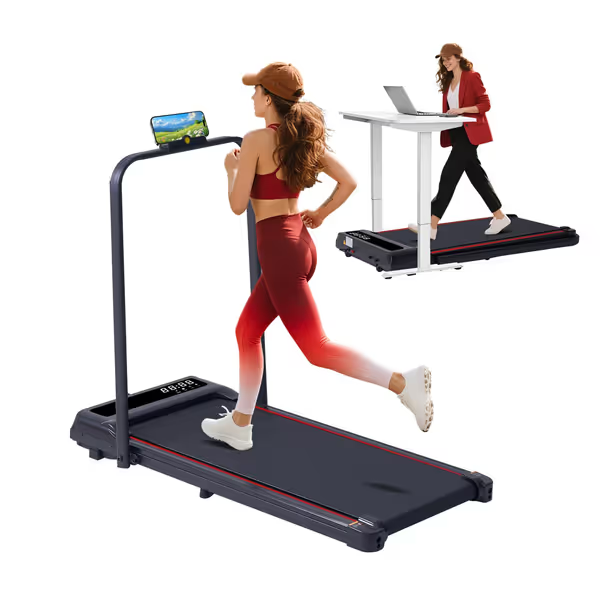
Compact Walking Pad Treadmill with Handle Bar
What are the biggest cold weather safety pitfalls?
❌ Skipping warm-ups
Cold muscles can't absorb impact. Begin every session with 3 minutes of off-leash movement: Have your dog weave between your legs ("follow the leader") or target nose to your palm. This gently increases blood flow to joints without forced exertion.
❌ Hard surface defaults
Ceramic tile or vinyl flooring has near-zero shock absorption, roughly equivalent to running on concrete. Surface note: If your palm slides when pressed firmly to the floor, so will your dog's pads. Layer yoga mats or outdoor-grade artificial turf (tested for non-toxicity) in activity zones.
❌ Ignoring indoor climate
Dry winter air dehydrates cartilage. Maintain humidity above 40% using a hygrometer; dehydration reduces joint cushioning by 15% within 20 minutes of activity (Journal of Canine Biomechanics, 2024). For a complete year-round safety checklist and warm-up routine, see our dog exercise safety guide.
Protect the joints today to unlock fuller movement tomorrow. This isn't philosophical, it's physiological. Every misstep on a slippery floor degrades joint integrity cumulatively.
How do I spot overexertion indoors?
Unlike outdoor walks, indoor sessions lack natural pacing cues. Watch for:
- Micro-stumbles during tight turns (indicates hip instability)
- Head bobbing while moving (neck compensation for sore hocks)
- Delayed sit/stand transitions (stiffness in stifles)
End sessions before these signs appear. For anxious dogs prone to over-arousal, integrate 10-second "pause points" every 90 seconds, and ask for a brief down-stay to reset neuromuscular engagement. Remember: Mental fatigue from controlled movement (e.g., slow-motion obstacle weaving) tires dogs more effectively than frantic bursts, reducing reactivity risks.
What's the progression ladder for lasting results?
| Week | Focus | Joint-Sparing Action | Duration |
|---|---|---|---|
| 1 | Surface Familiarization | Paw-targeting on non-slip mat | 2 min/session, 3x/day |
| 2 | Controlled Movement | Low-platform step-ups (4" max) | 3 min/session, 2x/day |
| 3 | Dynamic Stability | 6-foot hallway marches with 180° turns | 5 min/session, 2x/day |
| 4+ | Integration | Combined scent work + low obstacles | 8 min/session, 1-2x/day |
Always modify for age/weight: Seniors skip Week 3 turns; puppies use 2" platforms. Track progress via videoed gait analysis and compare smoothness of transitions weekly. If your dog's stride shortens or head carriage lowers, scale back. This deliberate pacing transforms what feels like "slow" progress into durable, injury-resistant mobility.
Actionable Next Step: Your First Joint-Safe Session Tomorrow
Before sunrise, lay non-slip mats in your narrowest hallway (least slippery surface). Place two folded towels as start/stop markers 6 feet apart. With your dog off-leash, walk slowly between them for 90 seconds, no treats, no commands, just calm guidance. Repeat once after a 5-minute break. Log: Could my dog look at me while moving? Were all paw placements quiet? This isn't about burning calories; it's about building movement confidence. In three days, add one gentle weave around a single pillow. Small, precise choices turn winter constraints into lifelong joint resilience. Because when comfort is a training aid, every step counts.
Related Articles

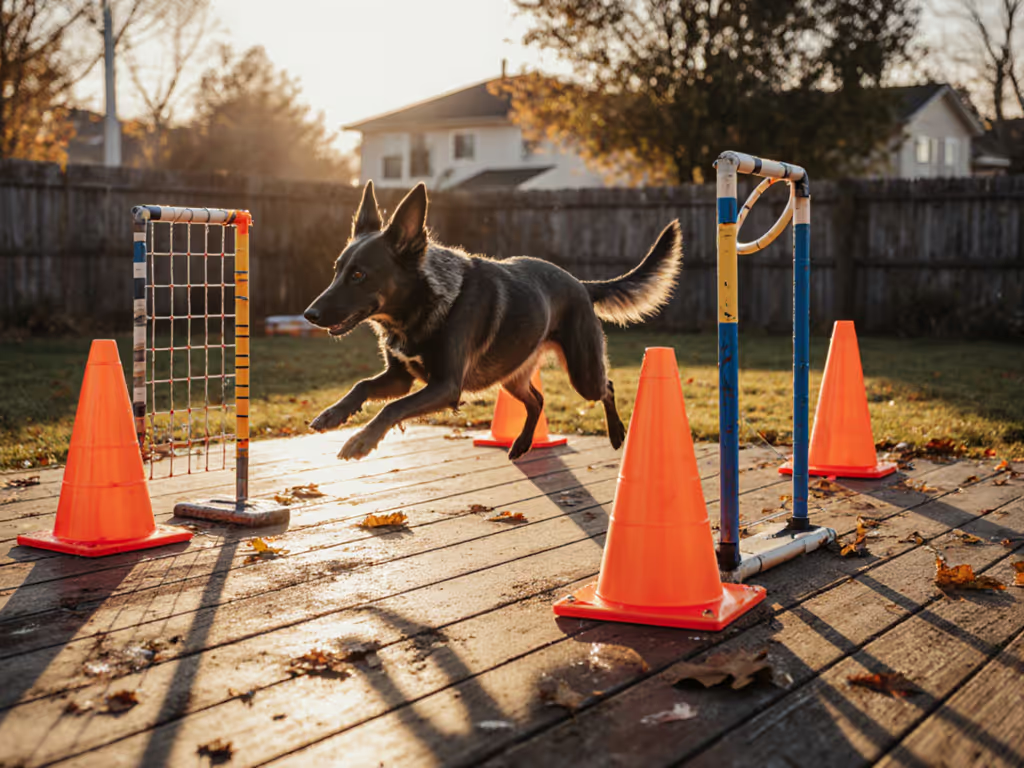
High-End Dog Exercise Gear: Long-Term Value Tested
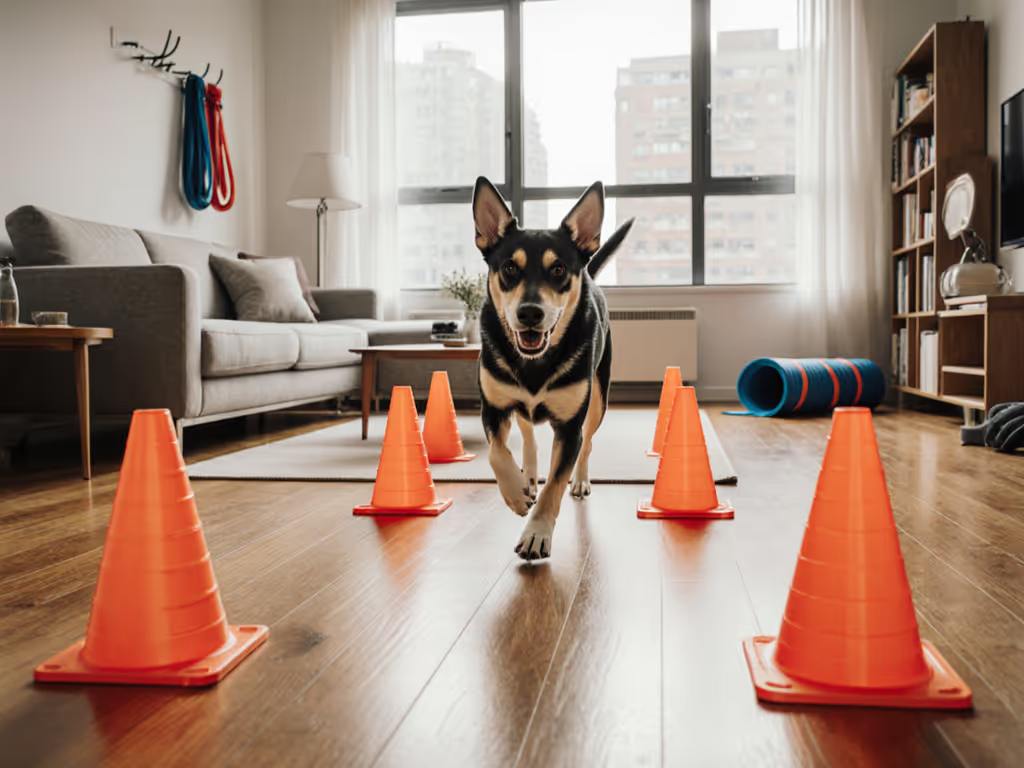
Space-Smart Indoor Dog Exercise Routine
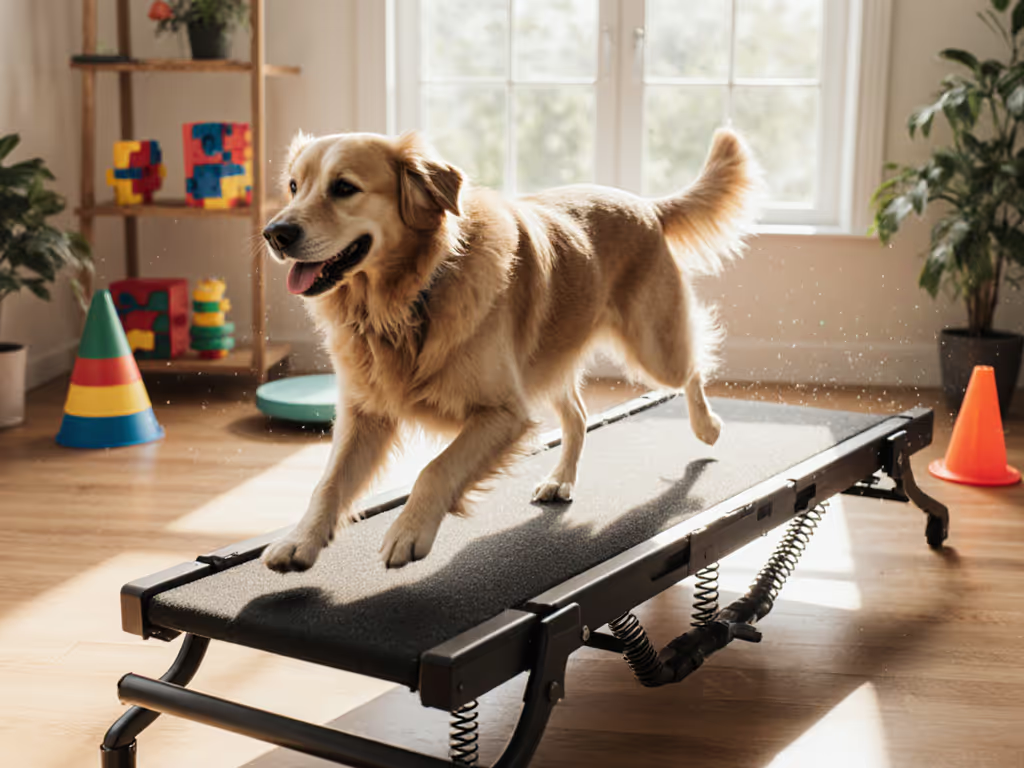
Indoor Dog Exercise Equipment: Joint-Safe Guide
